Interior design renovations are key investments senior living community operators must make to ensure long-term success. Design updates can increase a facility’s value, boost marketing potential, and build loyalty among current residents as they see operators investing in their homes. As a critical ingredient in the recipe for what makes residents feel at home within a community, interior design can be a determining factor in residents’ decisions to move into a community.
First impressions are certainly lasting impressions when it comes to selecting a community. A facility may provide top-quality service and care, but if the first impression the community generates is that its décor and design look dated, potential residents and their family members may choose to look elsewhere before ever learning about the facility’s outstanding services.
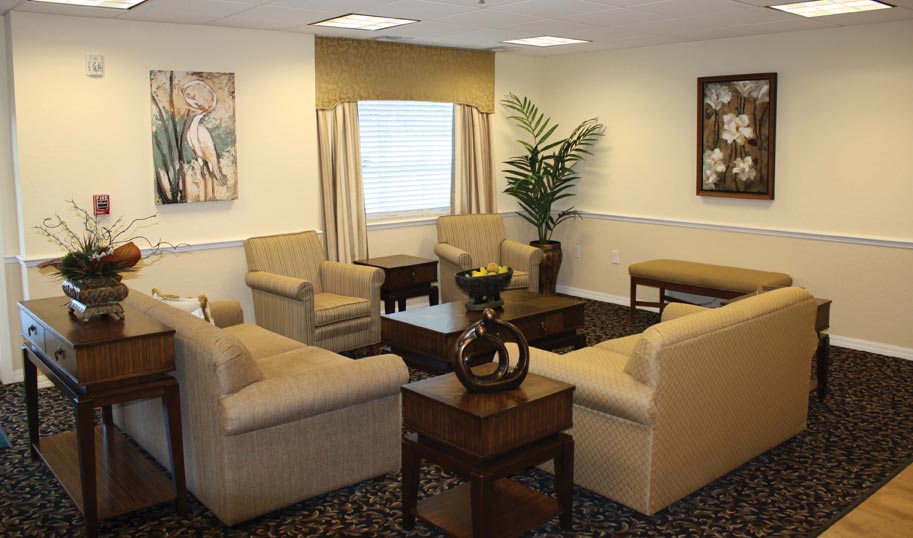 Stay Current
Stay Current
Maintaining a fashionable, fresh look within the property is critical to creating that great first impression.
Keeping up with current style trends is essential to this visual appeal. This is particularly important to family members who naturally want their loved ones to live in an attractive, well-maintained community that has fashionable furnishings and design features.
What this may mean, for example, is that a facility’s carpeting may show no signs of excessive wear and tear but still may need to be replaced because its style is outdated. Solid-colored carpeting in a low-cut style and color, such as mauve, often creates an institutional look and is generally considered outdated. Today, residential-style patterned carpeting is more appealing in senior living communities.
Color choices should complement the overall design scheme, and carpeting should be able to withstand everyday use and high traffic. In addition, vinyl composite tile, or VCT, hard flooring is a more appealing choice than wooden laminate or vinyl flooring.
Attractive color, fabric, and furnishing choices will vary depending on whether the facility is designed with a traditional or contemporary feel.
The selection of finishes and surfaces will be determined by the market niche in which the facility is competing. For instance, facilities positioned in the high-end luxury market are more apt to use granite counter tops rather than Formica. Style preferences will also differ by region, and it is important to research what is considered attractive in each facility’s market.
On the west coast of Florida, for example, many facilities are designed with bright paint colors and fabric selections. In contrast, the Atlanta area tends to favor a more traditional style using color choices such as burgundy and green.
Design And Efficiency Can Coexist
While style is important, there are several other design factors that operators should not ignore, as they can significantly improve residents’ standard of living and promote operational efficiency.
One common mistake operators make is overlooking the importance of blending décor with operations. It is critical that management work together wi
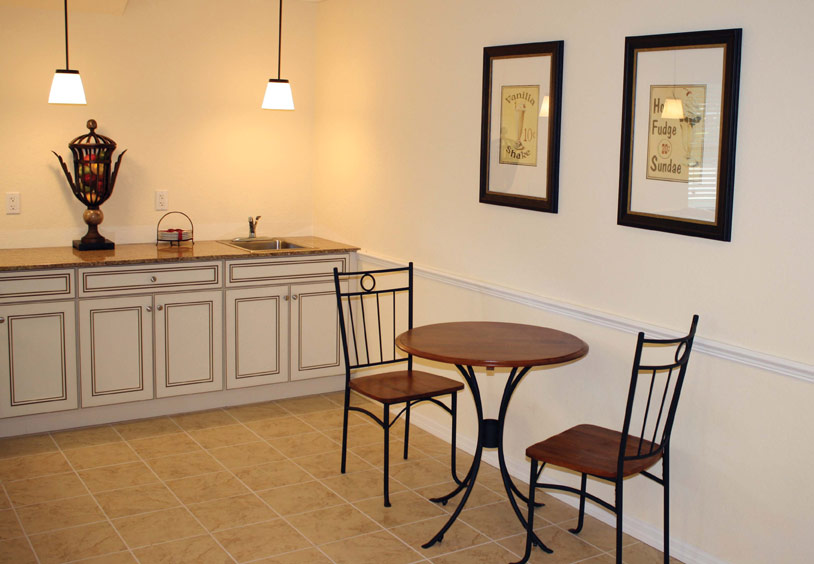
th architects to create a visually appealing design plan that meets operational requirements.
It is a balancing act operators must perform to please prospective and current residents and their family members, while keeping the facility operationally friendly.
Market research will help management determine how best to maintain that balance by looking at design through the eyes of all target audiences—including staff—to create a workable interior design plan that satisfies all groups.
Staff input is extremely important, as incorporating their ideas will give them a sense of ownership and result in a much happier environment.
Senior-Friendly Technology
Another critical element of design in today’s senior living community is technology, which can include safety features important to operations and technology residents can use for their enjoyment. Of particular interest is the growing trend for facilities to make computers accessible and easy for seniors to use, which may include senior-friendly touch-screen computers.
Computer-based programs that help residents stay active through cognitive stimulation are also becoming popular. Many facilities have included Nintendo Wii game consoles to introduce technology while promoting fitness and entertainment.
Leading senior living providers incorporate technological features in a strategic way to prevent the facility from seeming overly high-tech or institutional. The focus, instead, should be on comfort, while positioning the technology as another component of a homelike environment.
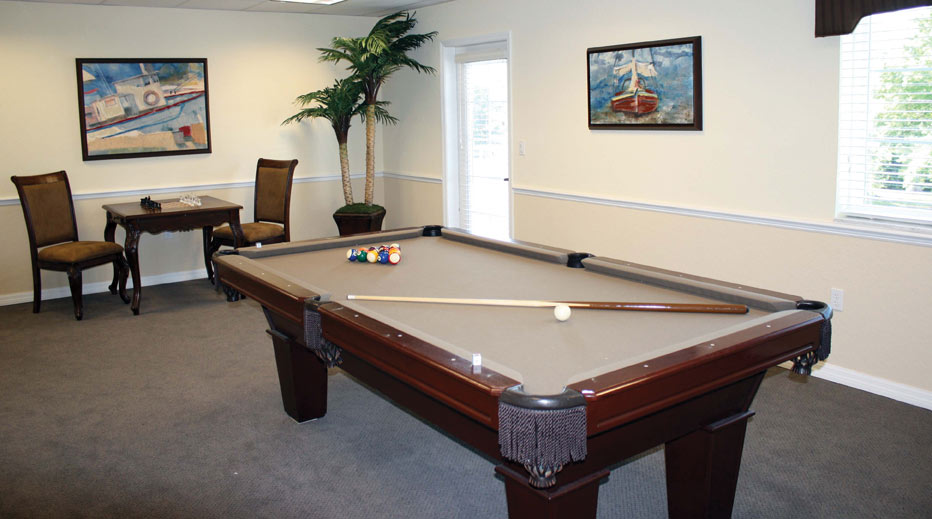
For example, rather than setting up the Wii in an activity room, many operators place the Wii in a living room to promote comfort and encourage use.
Senior-friendly features can do a lot to differentiate facilities while enhancing residents’ standard of living. These features may range from upgraded television systems for easier listening and viewing to planning more attractive outdoor living spaces with gazebos, shaded areas, and raised planters that can accommodate resident gardening.
Bathrooms should provide senior-friendly counter heights and seating, while hallways should include comfortable seating areas for residents to rest as they walk through the community.
Another facet is that of providing a continuum of independence and socialization through design by ensuring that amenities are user-friendly and common areas have enough seating to allow residents to share the space and socialize. Providing plenty of common space for informal meetings can encourage residents to form their own clubs or groups. Shared space may include television lounges; rooms for games, billiards, and arts and crafts; and a private dining room for residents to use when family and friends visit.
Bring In The Outside
A café is another attractive amenity, offering a convenient way to provide daily snacks and refreshments. Rather than using carts and trays to serve snacks at scheduled times, a café can be accessible to residents all day, providing choice as well as a more homelike way for residents to enjoy snacks on their own time. Installing a café may cost between $5,000 and $25,000, depending on the size of the area, décor selections, level of detail, and extent that design choices reflect an old-fashioned café.
Another unique feature gaining design attention is a Main Street-themed area that resembles a town center, allowing residents to feel they are going out, but without actually leaving the community. This may feature a walkway that looks like a cobblestone or brick road, lined with storefronts with awnings and decorated with lampposts, benches, and trees.
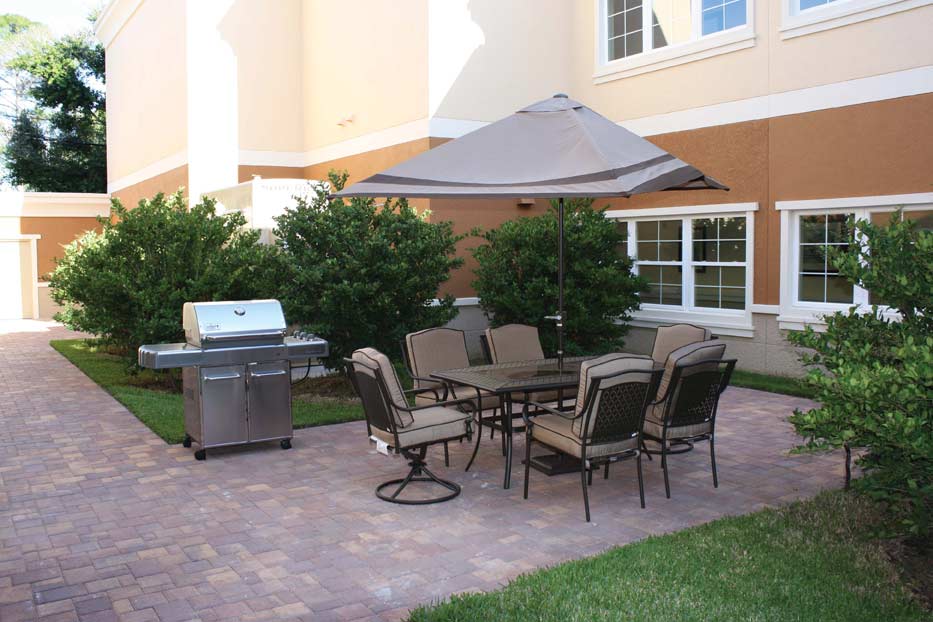
This design option is an effective way to create a warmer, friendlier setting for amenities like a doctor’s office, barbershop, beauty salon, and wellness center. In addition, the former medication room can be replaced with the look of a neighborhood pharmacy.
Residents’ level of comfort within a community can also depend on how at home they feel within their own apartments.
While many communities allow residents to “age in place” within the facility, few facilities have created design plans to minimize the need to relocate residents from the apartments where they feel at home to another unit in order to provide the care they require as their acuity levels change.
Basic design and furnishings can play an important role in this process, as each room should be designed for residents who will ultimately need the highest level of care. When residents begin to need a higher level of care than is provided in an entry-level assisted living unit, the services they need are brought to them, rather than moving them to another part of the facility that is specialized for the level of care they require.
Looking Ahead
As the seniors housing industry moves forward, senior-friendly furniture, design options, and technology will become more prevalent. More manufacturers are tapping into the senior market, creating variations of products designed specifically for seniors.
Technology is also being designed with seniors in mind, such as television remote controls with larger buttons that are easier to see and push and touch-screen computers with a larger keyboard and a trackball mouse that is easier for seniors to maneuver.
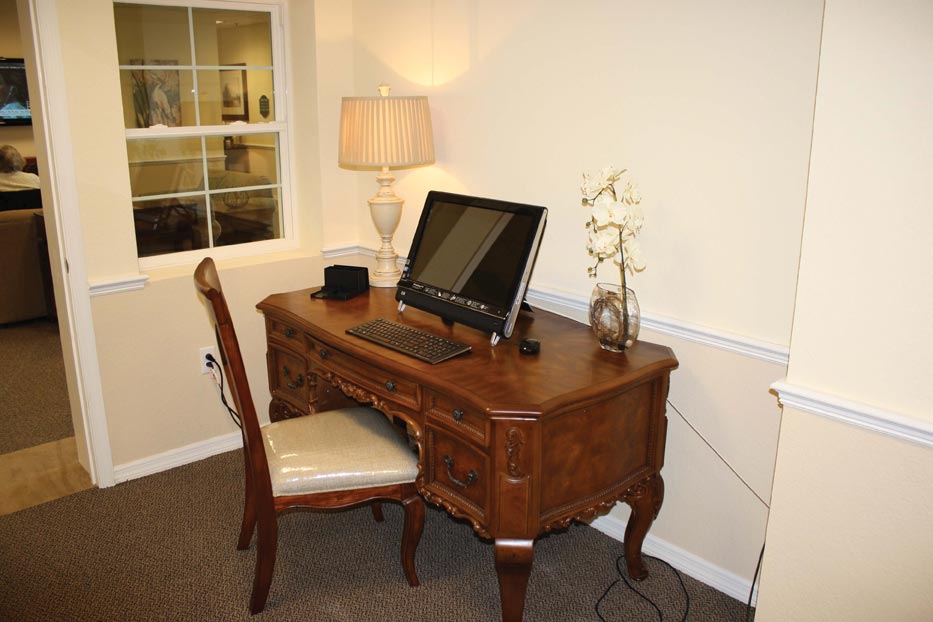
Communities that strive to be perceived as the most desirable will incorporate the best and most current thinking in design and furnishings. This need not be as comprehensive as a total overhaul—it may well be that a design “facelift” with new colors and upholstery will serve the need, while in other cases a more complete refurbishment or structural change may be needed to keep the community competitive.
In the long run, investing in a community through design can significantly increase a facility’s value and marketing potential, while creating a comfortable home for seniors with the amenities they desire and the features they need to age in place. Each renovation allows operators to update a community with the newest design features, thereby improving the residents’ standard of living and enhancing the visual appeal that is so important to their family members and caregivers.